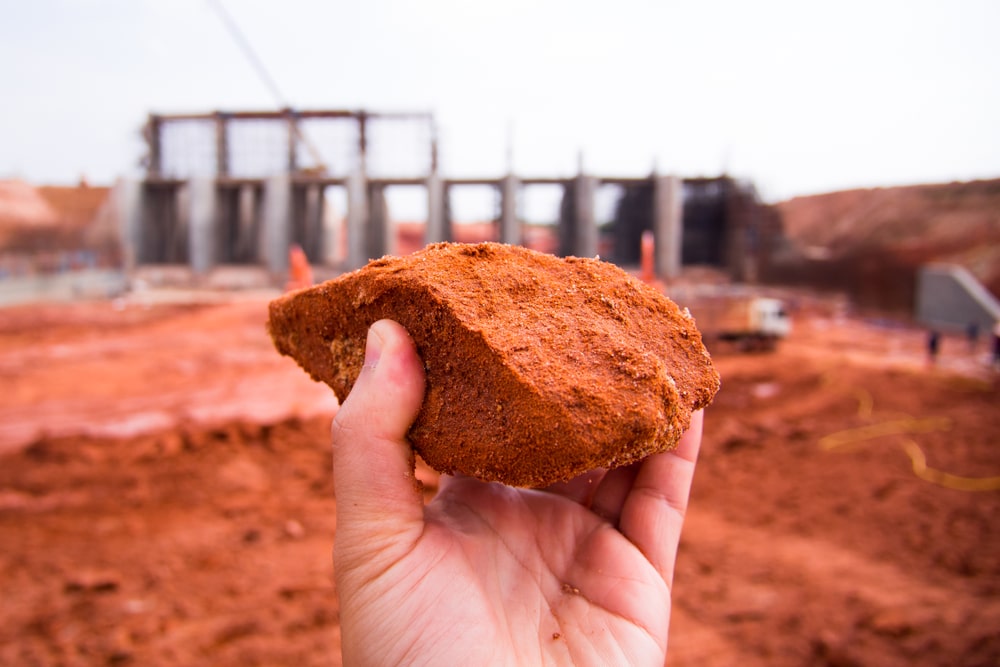The Buzz on Geotheta
The Buzz on Geotheta
Blog Article
Some Known Details About Geotheta
Table of ContentsGeotheta - TruthsThe Buzz on GeothetaThe Facts About Geotheta RevealedSee This Report on GeothetaGetting The Geotheta To Work

They conduct site examinations, accumulate examples, carry out research laboratory tests, and examine information to examine the suitability of the ground for construction jobs - Engineer of Record. Based upon their findings, geotechnical designers give recommendations for foundation design, slope stability, keeping frameworks, and mitigation of geotechnical hazards. They work together with various other professionals, such as engineers, structural engineers, and building and construction groups, to make certain that geotechnical factors to consider are integrated into the overall job design and application
By evaluating the habits and residential properties of dirt and rock, they can recognize prospective geotechnical hazards such as landslides, dirt negotiation, or incline instability. Their knowledge helps avoid failings or accidents that might threaten lives and residential or commercial property. Below are some comprehensive tasks and duties of a geotechnical engineer: Site Investigation: Geotechnical designers conduct website investigations to collect data on subsurface problems.
They interpret the data to recognize the properties and actions of the dirt and rock, including their stamina, permeability, compaction characteristics, and groundwater conditions. Geotechnical Evaluation and Layout: Geotechnical designers examine the information gathered during website investigations to evaluate the stability and suitability of the site for construction tasks. They execute geotechnical estimations and modeling to review elements such as bearing capacity, negotiation, slope stability, lateral planet stress, and groundwater circulation.
The smart Trick of Geotheta That Nobody is Talking About
Structure Design: Geotechnical engineers play a crucial role in creating foundations that can securely support the designated structure. They examine the dirt conditions and tons needs to establish the ideal structure kind, such as superficial structures (e.g., grounds), deep structures (e.g (https://dzone.com/users/5183482/geotheta.html)., piles), or specialized methods like dirt improvement. They consider aspects such as negotiation limits, bearing capacity, and soil-structure interaction to establish ideal foundation layouts
They review building and construction plans, display website activities, and perform area evaluations to validate that the design referrals are complied with. If unforeseen geotechnical problems emerge, they examine the situation and offer referrals for remediation or adjustments to the style. Danger Analysis and Mitigation: Geotechnical designers assess geotechnical hazards and risks related to the project website, such as landslides, liquefaction, or dirt disintegration.

Cooperation and Interaction: Geotechnical engineers work closely with various other professionals associated with a project, such as architects, architectural engineers, and construction groups. Effective communication and partnership are necessary to integrate geotechnical considerations right into the total project design and building process. Geotechnical engineers supply technical experience, response inquiries, and make certain that geotechnical requirements are satisfied.
Not known Facts About Geotheta
Below are some kinds of geotechnical engineers: Structure Designer: Foundation engineers concentrate on making and analyzing foundations for structures. They analyze the dirt problems, tons requirements, and website characteristics to determine the most suitable structure type and style, such as superficial structures, deep foundations, or specialized strategies Web Site like heap foundations.
They evaluate the elements influencing slope stability, such as dirt homes, groundwater conditions, and incline geometry, and create methods to avoid incline failures and alleviate risks. Earthquake Engineer: Quake designers concentrate on assessing and creating structures to hold up against seismic pressures. They analyze the seismic hazard of a site, evaluate dirt liquefaction capacity, and develop seismic design criteria to guarantee the security and strength of structures during quakes.
They carry out area testing, accumulate examples, and examine the accumulated data to define the soil properties, geologic formations, and groundwater problems at a site. Geotechnical Instrumentation Engineer: Geotechnical instrumentation designers concentrate on monitoring and determining the behavior of soil, rock, and frameworks. They set up and maintain instrumentation systems that monitor aspects such as dirt settlement, groundwater degrees, slope activities, and architectural variations to examine efficiency and give early cautions of potential concerns.
Excitement About Geotheta
They perform examinations such as triaxial examinations, loan consolidation tests, direct shear tests, and leaks in the structure examinations to gather information for geotechnical analysis and style. Geosynthetics Engineer: Geosynthetics engineers concentrate on the design and application of geosynthetic materials, such as geotextiles, geogrids, and geomembranes. They use these products to boost dirt security, strengthen inclines, give drainage services, and control erosion.
They tend to be investigative people, which implies they're intellectual, introspective, and inquisitive. They are interested, methodical, sensible, logical, and sensible. Some of them are likewise social, implying they're kind, charitable, cooperative, person, caring, helpful, empathetic, skillful, and friendly - Consulting Engineer.
In the office environment, geotechnical designers use specialized software program devices to carry out estimations, create layouts, and examine data. They prepare records, testimonial job specifications, communicate with clients and group members, and coordinate job activities. The workplace setting gives a helpful environment for research, evaluation, and partnership with various other professionals involved in the job.
Geotheta Things To Know Before You Get This
They often see task websites to carry out site investigations, examine geotechnical problems, and collect data for evaluation. These brows through involve traveling to various areas, occasionally in remote or tough surfaces. Geotechnical engineers may carry out dirt sampling, conduct tests, and screen construction activities to make certain that the geotechnical aspects of the job are being applied appropriately.
Geotechnical designers also function in specialized geotechnical laboratories. In these centers, they conduct experiments, execute examinations on dirt and rock examples, and assess the engineering buildings of the products. Geotechnical research laboratory designers function thoroughly in these settings, dealing with testing devices, running instruments, and recording information. They collaborate with other laboratory personnel to ensure precise and reputable screening results.
Report this page